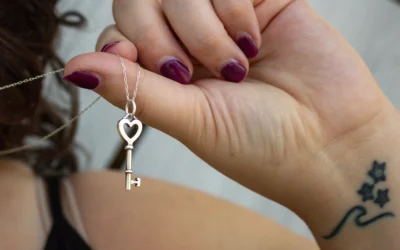How to spot red flags in relationships
The Gabby Petito case has been spreading awareness for domestic violence on social media after she was reported missing on Sept. 11. Her case has been closely followed across the world, as the FBI searches for her fiancé Brian Laundrie who is a person of interest regarding her death according to CNN.
On Sept. 19, Petito’s remains were found in Bridger-Teton National Park in Wyoming. Today, Laundrie has a federal arrest warrant set out for him, and has been missing since Sept. 14, CNN states
Intimate partner violence affects 12 million people per year according to the National Domestics Hotline. The Petito case is just one case that portrays the effects of domestic abuse, and social media users are using the hashtag #JusticeforGabby to spread awareness.
Although stories such as this are being shared all over the internet, domestic abuse may also be affecting you or someone you love. Here are some ways to recognize red flags early in a relationship, and where to seek help if you are experiencing this yourself.
According to Psychology Today, aspects such as lack of communication and trust, controlling behaviour, and concerned friends and family are all red flags that may arise early in a relationship.
When a person has trouble being honest with themselves, they also tend to be dishonest with those they are in relationships with. Although this may not come across as being purposely malicious or calculated, it is an unhealthy coping mechanism that can damage relationships around them, according to the Psychology Today website.
Controlling behaviour can often be portrayed through isolation. The National Domestic Violence Hotline states that isolation can be presented by controlling where a significant other goes, their involvement in certain activities, and justifying their actions through jealousy.
The National Domestic Hotline also says that these red flags may not happen overnight and that some signs will appear gradually and intensify as a relationship progresses. Watch for signs such as using coercion or threats, threatening to leave or harm the relationship, and suicide. Intimidation, such as creating fear through gestures, looks, or physically breaking objects are also red flags.
Financial abuse is another red flag in relationships, according to DomesticShelters.org. Abuse can be shown in many forms, including the withholding of finances, or preventing a significant other from going to work. Sherry Hamby, Ph.D, says on the site, “financial abuse is often neglected in the assessment of domestic violence.”
If you or someone you know is involved in an abusive relationship, there are ways to get help. The National Domestic Hotline offers advocacy services such as identifying abuse, planning for personal safety and recommending local resources, you can do this by calling or texting 800.799. SAFE (7233).
In the Edmonton area, there are currently seven domestic abuse shelters and programs, ranging from hotline services to emergency shelters, a full list can be found here on domesticshelters.org.
If you are on campus at MacEwan University, there is an office of Sexual Violence and Prevention, Education, and Response that can provide support and information and access to other community resources to ensure that students are safe.
Red flags and abuse may not always be identified at first, but there are resources to help those who are in dangerous situations. Remember, it is important to read the signs, seek help, and support others who are experiencing domestic abuse.





Very important topic to address in modern day. Great read